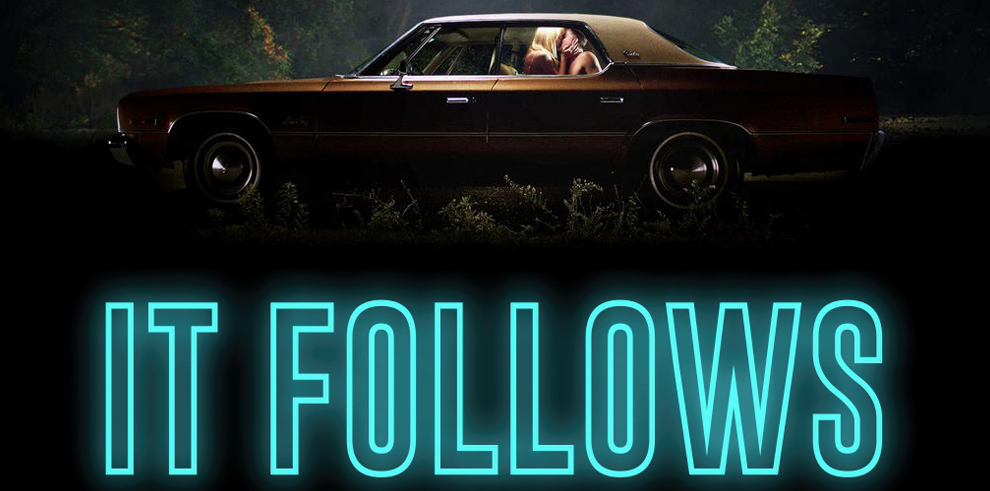David Robert Mitchell’s recent horror film It Follows is a work of in-betweens, as straightforward yet mysterious as its title suggests. The premise: Moments after a turn in the backseat of her new boyfriend’s car, nineteen-year-old Jay (Maika Monroe) learns that she will now be the subject of pursuit by a rotating cast of slow-walking predators. To impress upon Jay the seriousness of the situation, her date, who calls himself Hugh, chloroforms her, binds her to a wheelchair, and stations her in the middle of a disused parking structure, while out of the dark stalks a pale naked woman. With some apology, Hugh explains that the only way for Jay to free herself from these followers is to sleep with someone else, passing “it” on. But if she’s caught and killed, it will come after Hugh again, and so on down the chain of lovers. Finally, just before the naked figure approaches too close, Hugh speeds Jay away, back to the car, and then home, where he deposits her on the front lawn in front of her sister and friends, still in her underwear.
Apart from these grounding rules, it remains enigmatic, a pronoun without antecedent. We never learn what exactly it is, what it wants with its victims, or how it originated. Invisible to the un-afflicted, the figures—always in human form, often naked or else in white hospital gowns—do interact with physical space in ways that everyone can perceive, shattering windows, pounding on doors, hurling electronic appliances. As viewers we are in a position somehow both more commanding and more unstable than anyone else, since we see at times from Jay’s point of view and at times from her friends’; part of the film’s tension comes from the fact that only sometimes are we sure whether the person approaching the characters on screen is a demon or not. And yet the simple promise of the title is faithfully carried out—no matter where Jay hides, whether locked in her bedroom in suburban Detroit or with her increasingly credulous (and scared) friends on a lakeshore up north, she’s soon to be found.
Mitchell builds other uncertainties into the setting itself. First the explainable: we are shuttled back and forth between Detroit’s comfortable suburbs and its boarded-up urban leftovers, crossing 8 Mile, characterized by Jay’s friend Yara as a kind of dangerous border zone. Anyone who has visited Detroit in recent years will recognize these chilling images as very real, not Hollywood facades. Still, the film seems caught inexplicably between at least two periods of time. Interior décor recalls a drabness twenty-five or thirty years old, perhaps in homage, like the black-and-white films always playing on the boxy tube type TV in Jay’s living room, to genre tradition. But we’re not in the past, or not simply. While the others watch old movies on the old TV set, Yara prefers to read from what can only be described as a plastic seashell Kindle, hinged like a compact. Ever incongruous, from this pink e-reader she delivers passages of Dostoevsky’s Idiot.
But do all these uncertainties and in-betweens serve a “greater” purpose than to keep us on the edge of our seats? Hard to say, though it’s tempting to look toward the liminality of our characters’ adolescence for a clue. Artists have often used the conventions of horror to express the conflicts of coming of age, literalizing the terrors of that destabilizing transformation. Think Carrie or Charles Burns’s graphic novel Black Hole, another narrative of sexually transmitted woe. But It Follows resists the reductive allegorical readings we might try to impose on it—as a kind of commentary on sexual shaming or guilt, for instance, or as an especially gripping piece of abstinence propaganda. And this, of course, is why it works. Its only agenda is to scare—which, I can say with certainty, it does.





